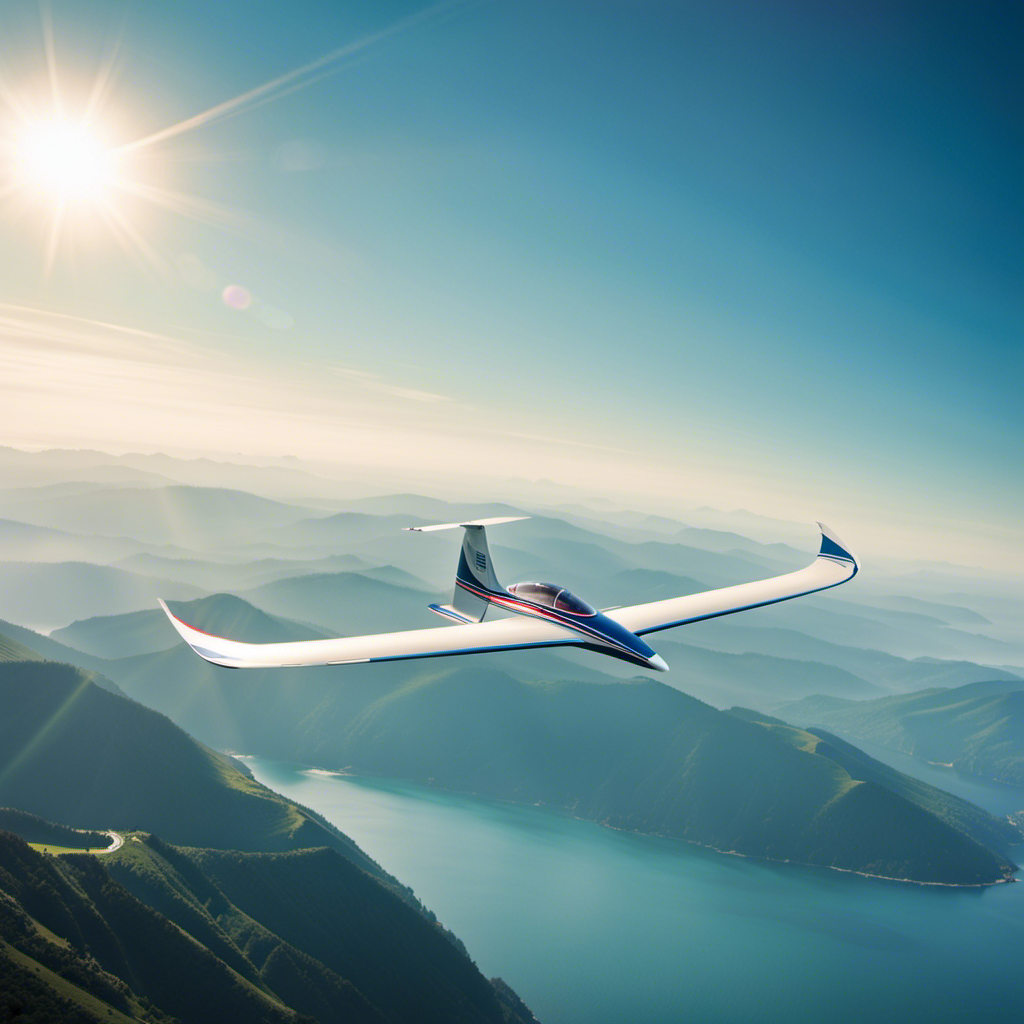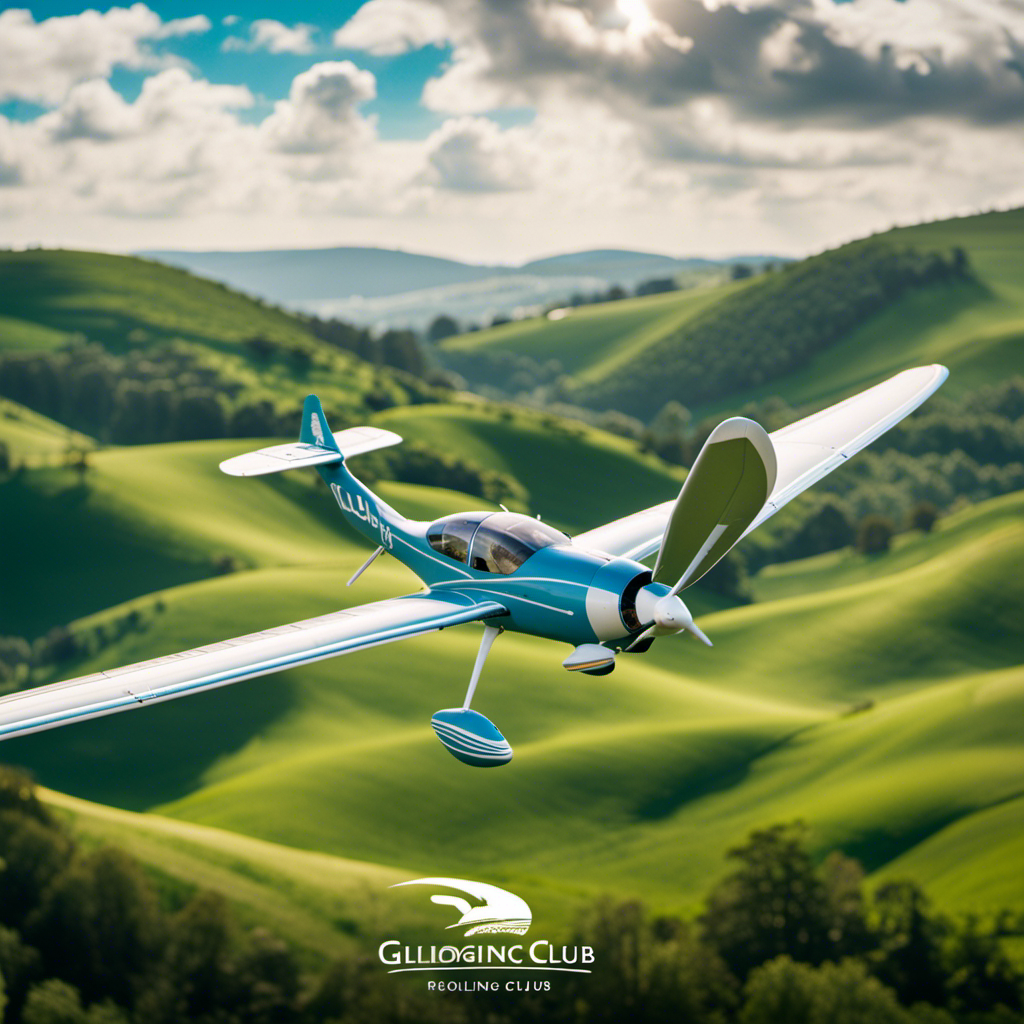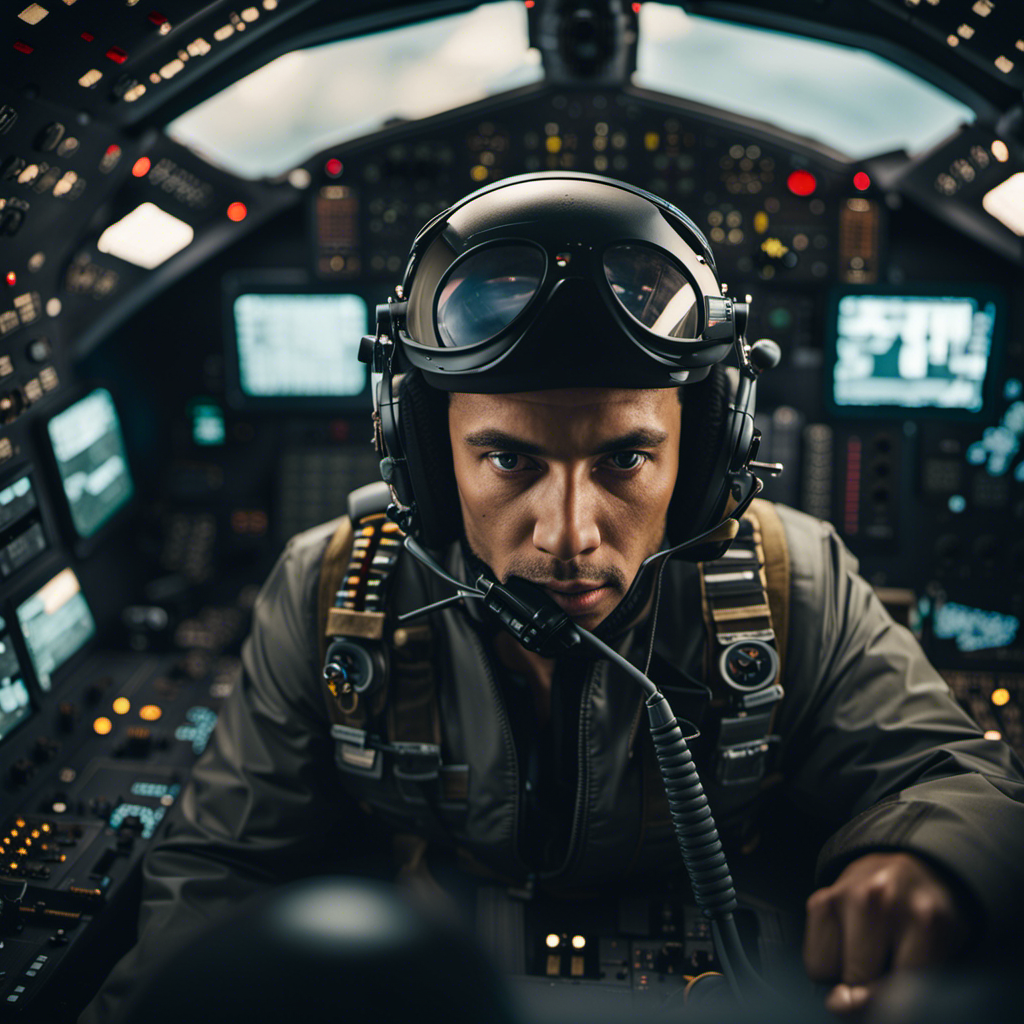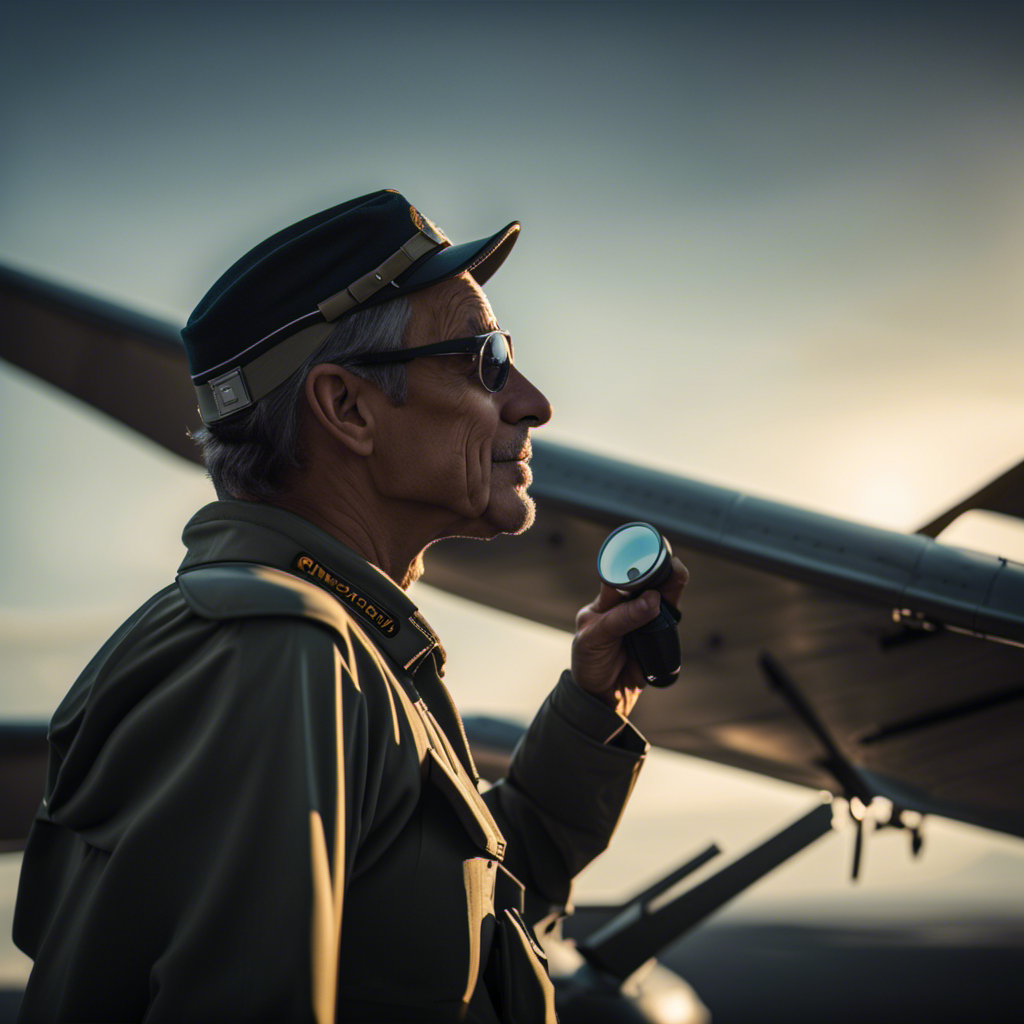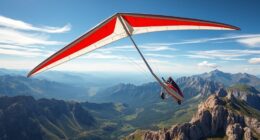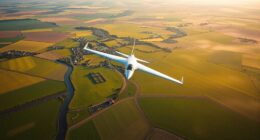Are you ready to experience the thrill of hang gliding and soar through the sky? If you are, then get ready for an unforgettable adventure!
In this comprehensive review and buying guide, I’ll walk you through everything you need to know about wing gliders. From the different types available to the key features you should consider, we’ll leave no stone unturned.
So buckle up, because by the time we’re done, you’ll be well-equipped to choose the perfect wing glider for your next adventure.
Let’s get started!
Key Takeaways
- Wing gliders can be categorized into three types: flex wing, rigid wing, and powered wing
- Key features to consider when buying a wing glider include wing size and design, frame material and construction, and safety features
- Performance factors to consider are glide ratio, speed range, and maneuverability
- Training, safety precautions, and maintenance are important aspects of wing gliding, including certification, training, and upkeep of the glider.
Brief Overview of Wing Gliders
Wing gliders, also known as hang gliders, are lightweight aircraft that allow pilots to soar through the air using thermal currents. These incredible machines come in various types and are used in a range of competitions.
There are three main types of wing glider competitions: distance, duration, and aerobatics.
In distance competitions, pilots aim to cover the longest distance possible within a given time frame.
Duration competitions focus on staying aloft for the longest period of time.
Aerobatics competitions showcase the pilot’s ability to perform intricate maneuvers and stunts in the air.
Apart from the thrill and excitement, wing gliding also offers numerous benefits for fitness and wellness.
The physical demands of controlling the glider, along with the mental focus required, make it an excellent form of exercise.
Additionally, being surrounded by nature and experiencing the freedom of flight contribute to a sense of well-being and relaxation.
Now, let’s explore the different types of wing gliders available.
Types of Wing Gliders
When it comes to choosing the right type of wing glider, you’ll find that there are various options available for you to consider. Different wing designs and wing glider manufacturers offer a range of choices to suit different needs and preferences. To help you make an informed decision, here is a comparison table showcasing three popular wing glider types:
| Wing Glider Type | Description |
|---|---|
| Flex Wing | This type of wing glider has a flexible wing structure, allowing for easy maneuverability and control. It is commonly used in recreational flying and offers a thrilling flying experience. |
| Rigid Wing | A rigid wing glider features a fixed wing structure, providing stability and efficiency during flight. It is often used in competitive gliding and offers excellent performance in soaring conditions. |
| Powered Wing | As the name suggests, a powered wing glider has an attached engine, allowing for self-launch and sustained flight. It combines the benefits of gliding and powered flight, offering versatility and convenience. |
Now that we have explored the different types of wing gliders, let’s delve into the key features to consider when choosing the perfect wing glider for your needs.
Key Features to Consider
When it comes to wing gliders, there are three key features that I believe are crucial to consider:
-
Wing size and design: This determines the glider’s performance and stability in the air. A well-designed wing with the right size can enhance maneuverability and control, allowing for a smoother and more enjoyable flight experience.
-
Frame material and construction: The choice of frame material and construction methods has a significant impact on the glider’s durability and weight. A sturdy frame made from lightweight materials, such as carbon fiber or aluminum, can make the glider more robust and easier to handle.
-
Safety features: Last but not least, safety features are essential to ensure the pilot’s well-being during flight. These features may include things like parachute systems, emergency release mechanisms, or impact-resistant materials. Having these safety measures in place provides peace of mind in potentially risky situations.
Overall, considering these three key features when choosing a wing glider can help you find a model that offers optimal performance, durability, and safety.
Wing Size and Design
The performance and stability of a glider are greatly influenced by the size and design of its wings. It is important to carefully consider these factors when choosing a wing glider to ensure optimal flight characteristics.
-
Wing Size: The size of the wing directly impacts the glider’s lift and glide performance. A larger wing provides more lift, allowing the glider to stay airborne for longer periods. Conversely, a smaller wing offers increased maneuverability and agility.
-
Wing Design: The design of the wing plays a significant role in the glider’s stability and handling. Factors such as wing shape, airfoil profile, and wingtip design must be taken into account. An efficient airfoil profile reduces drag and improves the glider’s glide ratio, while the wingtip design affects its stability and stall characteristics.
-
Wing Loading: Wing loading, which refers to the weight supported by each square meter of wing area, also affects the glider’s performance. Higher wing loading provides faster speeds and better penetration in windy conditions, while lower wing loading allows for slower and more controlled flights.
Considering these aspects of wing glider wing size and design is crucial in selecting a glider that suits your flying style and conditions.
Now, let’s dive into the next section, where we will discuss frame material and construction.
Frame Material and Construction
To ensure a durable and lightweight glider, it is important to consider both frame material and construction. The frame material plays a crucial role in determining the overall strength and weight of the wing glider. Commonly used frame materials include aluminum alloy, carbon fiber, and titanium.
Aluminum alloy frames are affordable and offer good durability, but they can be heavier compared to carbon fiber or titanium frames. Carbon fiber frames, on the other hand, are lightweight and provide excellent strength, making them popular among experienced gliders. Titanium frames offer the best strength-to-weight ratio but come with a higher price tag.
When it comes to construction, the frame should be designed in a way that distributes the load evenly throughout the glider. This ensures optimal stability and performance.
Transitioning into the next section, safety features are equally important for a reliable wing glider.
Safety Features
Make sure you prioritize safety when choosing a wing glider, as having reliable safety features is essential. When considering safety precautions, there are a few key features to look out for:
- Safety harness: A well-designed harness with strong straps and buckles is crucial to securely fasten yourself to the wing glider.
- Emergency parachute: In case of any unforeseen circumstances, an emergency parachute can be a lifesaver, providing a controlled descent to the ground.
- Deployment system: A quick and efficient deployment system ensures that the emergency parachute can be activated promptly when needed.
- Training techniques: Proper training on emergency procedures, including parachute deployment, is essential to ensure the pilot’s ability to act swiftly and effectively.
By understanding these safety features and taking the necessary training techniques into account, you can confidently choose a wing glider that prioritizes your safety.
Now, let’s delve into the next section to explore the performance factors that contribute to an exceptional wing glider experience.
Performance Factors
When it comes to evaluating the performance of a wing glider, there are several key factors that must be considered.
One of these factors is the glide ratio, which measures how efficiently the glider can maintain its altitude while flying horizontally.
Another important factor is the speed range, which refers to the range of speeds at which the glider can operate effectively.
Lastly, maneuverability is a crucial aspect to consider, as it determines how easily the glider can change direction and perform various aerial maneuvers.
Glide Ratio
You should know that the glide ratio of a wing glider determines how far you can fly with each unit of altitude lost. It is a crucial factor in determining the efficiency of a glider’s flight.
Here are four important aspects to consider regarding glide ratio:
-
Glide Efficiency: A high glide ratio indicates better efficiency, as it means the glider can cover more horizontal distance while losing less altitude. This allows for longer flights and increased range.
-
Wing Loading: The weight of the glider in relation to the wing area affects the glide ratio. Higher wing loading can result in a lower glide ratio, as the glider may require more lift to maintain its flight.
-
Wing Design: The aerodynamic design of the wing plays a significant role in determining the glide ratio. Wings with a higher aspect ratio (length to width ratio) tend to have better glide ratios.
-
Pilot Skill: The pilot’s ability to maximize the glider’s potential and make efficient use of the available lift also impacts the glide ratio.
Understanding the factors that influence glide ratio is essential when evaluating the performance of wing gliders.
Transitioning into the subsequent section on the ‘speed range,’ it is important to note that the glide ratio can vary at different speeds.
Speed Range
Transitioning into the subsequent section on the speed range, it’s important to understand how different speeds can affect the glide ratio.
When it comes to wing gliders, speed limitations are crucial to ensure safe and efficient flight. Each wing glider has a specific range of speeds within which it operates optimally. Going beyond these speed limitations can lead to decreased glide ratio and compromised control.
Weather conditions also play a significant role in determining the appropriate speed range. Strong winds or turbulent conditions require a lower speed range to maintain stability and maneuverability. On the other hand, calm and steady weather allows for a wider speed range, providing the pilot with more flexibility in controlling the glider.
Now, let’s transition into the subsequent section on maneuverability.
Maneuverability
To effectively control a wing glider, it’s important to understand its maneuverability and how it responds to different inputs. Maneuverability refers to the ability of the wing glider to change direction and perform various aerial maneuvers. The maneuverability of a wing glider is influenced by several factors, including its design, wing shape, and wing glider weight.
When considering the maneuverability of a wing glider, it’s essential to take into account the following:
-
Wing Design: The design of the wing plays a crucial role in determining the maneuverability of the glider. A wing with a higher aspect ratio tends to have better maneuverability.
-
Wing Shape: The shape of the wing also affects the glider’s maneuverability. A wing with a more tapered shape offers improved maneuverability compared to a wing with a straighter shape.
-
Wing Glider Weight: The weight of the wing glider impacts its maneuverability. Lighter gliders tend to be more maneuverable, as they respond quicker to control inputs.
Understanding the maneuverability of a wing glider is essential when choosing the right wing glider for your skill level. By considering factors such as wing design, wing shape, and wing glider weight, you can make an informed decision that aligns with your flying abilities.
Choosing the Right Wing Glider for Your Skill Level
It’s important to choose a wing glider that matches your skill level to ensure a safe and enjoyable flying experience. Your skill level and experience level play a crucial role in determining the type of wing glider that suits you best.
For beginners, it is recommended to start with a glider that offers stability and ease of control. These gliders typically have a higher aspect ratio and a slower flying speed, allowing novice pilots to build their confidence gradually.
As you gain more experience and proficiency, you can transition to gliders with higher performance characteristics, such as higher glide ratios and increased agility. This progression ensures that you are constantly challenged and can continue to develop your skills.
Now that we have discussed choosing the right wing glider, let’s delve into the next important aspect: safety precautions and training.
Safety Precautions and Training
Now that you’ve chosen the right wing glider for your skill level, let’s focus on the importance of safety precautions and training.
When it comes to wing gliding, safety should always be the top priority. To ensure a safe and enjoyable experience, here are some key points to keep in mind:
-
Safety Training: Before taking to the skies, it is crucial to undergo proper safety training. This includes learning about emergency procedures, understanding weather conditions, and practicing landing techniques.
-
Equipment Requirements: Investing in high-quality safety equipment is essential. This includes a certified helmet, a reliable harness, and a reserve parachute. Always ensure that your equipment is in good condition and regularly inspected.
-
Pre-flight Checklist: Before every flight, perform a thorough pre-flight checklist. This includes checking the wing glider for any signs of damage, inspecting the harness and parachute, and verifying that all equipment is securely fastened.
By following these safety precautions and undergoing proper training, you can minimize risks and enjoy a safe wing gliding experience.
Now let’s delve into the next section about the maintenance and upkeep of your wing glider.
Maintenance and Upkeep
Regular maintenance is essential for keeping your wing glider in optimal condition and ensuring its longevity. To start, always inspect the glider before each flight, checking for any signs of wear or damage. Pay close attention to the lines, making sure they are not frayed or tangled. Additionally, make sure to clean the glider regularly to remove dirt and debris that can affect its performance. Lubricate any moving parts, such as the pulleys and carabiners, to prevent rust and ensure smooth operation. Common issues to watch out for include torn fabric, broken lines, and damaged risers. Address these issues promptly to prevent further damage and maintain the safety of your glider. By following these maintenance tips, you can enjoy many more years of safe and thrilling wing gliding experiences.
When it comes to wing gliding destinations and communities, there are numerous options to explore. These destinations offer breathtaking views and challenging conditions for gliders of all skill levels. Whether you prefer soaring above mountains, coastal landscapes, or open fields, there is a destination that suits your preferences.
In addition to the diverse flying opportunities, wing gliding communities provide a supportive and passionate network of fellow gliders. They offer advice, organize events, and share their experiences, creating a sense of camaraderie among enthusiasts. Engaging with these communities can enhance your wing gliding journey and provide opportunities to connect with like-minded individuals.
Wing Gliding Destinations and Communities
To truly immerse yourself in the wing gliding community, consider joining one of the many vibrant and supportive communities that offer advice, organize events, and provide opportunities to connect with like-minded individuals. These communities are not only a great way to expand your knowledge and skills, but also to participate in wing gliding competitions and showcase your abilities.
Being part of these communities also allows you to stay updated on the latest wing gliding equipment and gear, as members often share their experiences and recommendations. By connecting with other wing gliders, you can gain valuable insights into the best equipment options for different flying conditions and techniques. Furthermore, these communities often organize group purchases or offer discounts on gear, making it easier to find high-quality equipment at affordable prices.
Transitioning into the subsequent section about budget considerations, it is important to carefully consider your financial limitations before making any purchases.
Budget Considerations
When considering the budget for wing gliding, it is important to take into account the cost of wing gliders themselves. These can vary greatly depending on the type, brand, and features of the glider.
In addition to the initial purchase cost, there are also additional expenses to consider such as maintenance, repairs, and insurance.
Cost of Wing Gliders
If you’re looking to buy a wing glider, you might be wondering how much they typically cost. The cost of wing gliders can vary significantly depending on several factors.
The first factor is the type of wing glider you choose. Different models and brands come with different price tags. Additionally, the materials used in the construction of the wing glider can also affect its cost. High-quality materials such as carbon fiber tend to be more expensive compared to other options.
Another cost factor to consider is the level of customization and additional features you want for your wing glider. These options can add to the overall price. However, there are affordability options available, such as purchasing used wing gliders or opting for entry-level models.
Understanding these cost factors and exploring affordability options can help you find a wing glider that suits your budget.
Now, let’s move on to the next section and discuss the additional expenses associated with owning a wing glider.
Additional Expenses
Once you own a wing glider, you’ll need to budget for regular maintenance and repairs to ensure its optimal performance. Along with the initial purchase cost, there are additional expenses to consider.
Firstly, accessories are essential for enhancing your wing glider experience. These may include a helmet, harness, and other safety gear. Investing in high-quality accessories is crucial for your safety and comfort.
Secondly, maintenance costs should be factored into your budget. Regular inspections, cleaning, and lubrication are necessary to keep your wing glider in top shape. Additionally, you may encounter unexpected repairs due to wear and tear or accidents. It’s important to set aside funds for such contingencies.
Taking proper care of your wing glider and staying prepared for additional expenses will ensure that you can enjoy this exhilarating activity for years to come.
Final Thoughts and Recommendations
In conclusion, my top recommendation for purchasing a wing glider would be to opt for a model that offers a good balance between performance and durability. After thoroughly researching and evaluating various wing gliders, I have come to the following final thoughts and recommendations:
-
Consider the wing glider’s wing design and material. Look for a wing with a high aspect ratio and made from durable materials such as carbon fiber or fiberglass.
-
Pay attention to the glider’s weight and maneuverability. A lightweight glider will allow for better control and agility during flights.
-
Look for a glider that offers adjustable harness and cockpit options for maximum comfort and customization.
-
Consider the glider’s safety features, such as built-in reserve parachute systems or impact-absorbing materials.
-
Lastly, read customer reviews and seek recommendations from experienced pilots to ensure you choose a reputable brand known for their quality and customer support.
Frequently Asked Questions
Are wing gliders suitable for beginners or only for experienced pilots?
Wing gliders are suitable for beginners as they are beginner-friendly and come with safety precautions. However, proper training and supervision are essential to ensure a safe and enjoyable experience for novice pilots.
How long does it take to learn how to fly a wing glider?
Learning to fly a wing glider requires a certain learning curve and training requirements. The length of time it takes to learn depends on individual aptitude and dedication to training.
Are there any age restrictions for flying a wing glider?
There are no specific age restrictions for flying a wing glider, but safety measures must be followed. It is important to ensure proper training, physical fitness, and adherence to all regulations for a safe flying experience.
Can wing gliders be used for competitive flying or are they just for recreational purposes?
Competitive wing gliding events are the epitome of adrenaline-pumping excitement! However, safety measures for wing glider pilots are paramount. From rigorous training to meticulous equipment checks, every detail is meticulously attended to ensure a thrilling and secure experience.
What are some common misconceptions about wing gliders?
Common misconceptions about wing gliders include thinking they are only for recreational purposes, when in fact they can be used for competitive flying. Safety precautions for flying a wing glider include proper training, equipment checks, and weather assessment.
Conclusion
In conclusion, after diving deep into the world of wing gliders, it’s evident that these soaring machines offer an exhilarating and awe-inspiring experience.
From the adrenaline rush of takeoff to the graceful dance through the sky, wing gliding is a truly unique adventure.
Whether you’re a seasoned pilot or a beginner, there’s a wing glider out there to suit your needs.
So, spread your wings and let the wind carry you to new heights, where freedom and serenity await.
